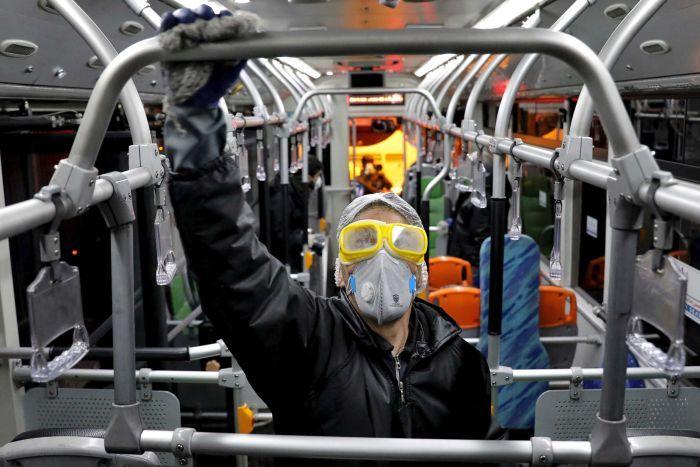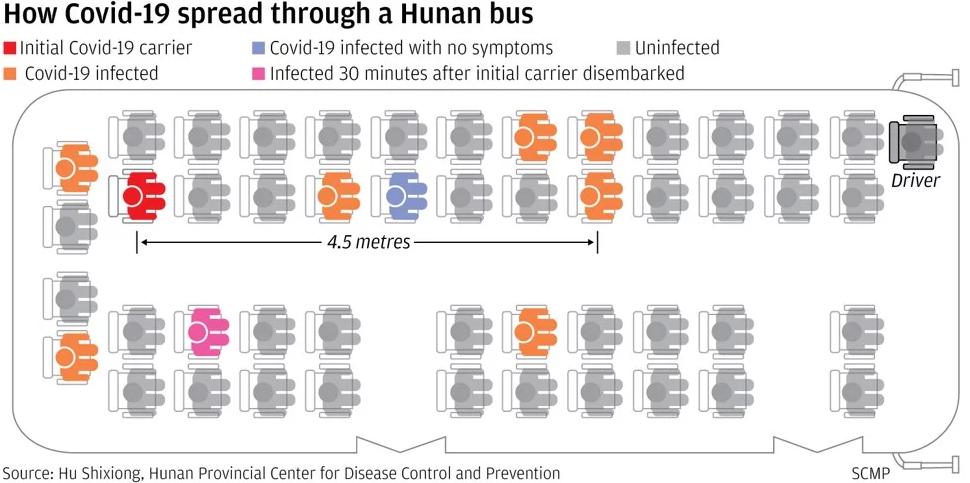Aerosolized coronavirus can hang in the air for at least 30 minutes and travel up to 14 feet - approximately twice the "safe distance" recommended by health officials, according to SCMP.
The study, conducted by a team of Chinese government epidemiologists from Hunan province, also found that the virus can survive for days on a surface where respiratory droplets land.
The length of time it lasts on the surface depends on factors such as temperature and the type of surface, for example at around 37C (98F), it can survive for two to three days on glass, fabric, metal, plastic or paper.These findings, from a group of official researchers from Hunan province investigating a cluster case, challenge the advice from health authorities around the world that people should remain apart at a “safe distance” of one to two metres (three to six and a half feet). -SCMP
The researchers warned that the virus could survive over five days in human feces or bodily fluids, and that it could remain floating in the air after a carrier had left a public bus.
"It can be confirmed that in a closed environment with air-conditioning, the transmission distance of the new coronavirus will exceed the commonly recognised safe distance," the researchers wrote in their paper, published in peer-reviewed journal, Practical Preventive Medicine.
"Our advice is to wear a face mask all the way [through the bus ride]," the researchers recommended.
They said the study proves the importance of washing hands and wearing face masks in public places because the virus can linger in the air attached to fine droplet particles....Their work was based on a local outbreak case on January 22 during the peak Lunar New Year travel season. A passenger, known as “A”, boarded a fully booked long-distance coach and settled down on the second row from the back.The passenger already felt sick at that point but it was before China had declared the coronavirus outbreak a national crisis, so “A” did not wear a mask, nor did most of the other passengers or the driver on the 48-seat bus. -SCMP
Because China requires closed circuit television cameras to record all long-distance us rides, researchers were able to reconstruct the spread of the virus on the bus, which had no open windows.
Lead author Hu Shixiong said that the camera footage revealed patient "A" did not interact with anyone throughout the four-hour ride, yet the virus infected seven other passengers by the time the bus stopped at the next city. Infected passengers included not only those sitting relatively close to "patient zero," but people six rows away - or 4.5 meters (14.76 feet).
All seven tested positive, including one passenger who displayed no symptoms. Then, 30 minutes later, another group of passengers got on the bus - one of whom was sitting in the front seat when they also became infected. Patient "A" meanwhile, got on another minibus and infected two other passengers.
Hu said the patient, who was not wearing a mask, was likely to have inhaled aerosols, or tiny particles, breathed out by the infected passengers from the previous group.
Aerosols are light-weighted particles that are formed from tiny droplets of bodily fluids. -SCMP
"The possible reason is that in a completely enclosed space, the airflow is mainly driven by the hot air generated by the air conditioning. The rise of the hot air can transport the virus-laden droplets to a greater distance," the paper reads.
"When riding on more closed public transportation such as subways, cars, planes, etc, you should wear a mask all the time, and at the same time, minimise the contact between your hands and public areas, and avoid touching your face before cleaning."
In total, patient "A" is believed to have infected at least 13 people.
Read the rest of the report here.

